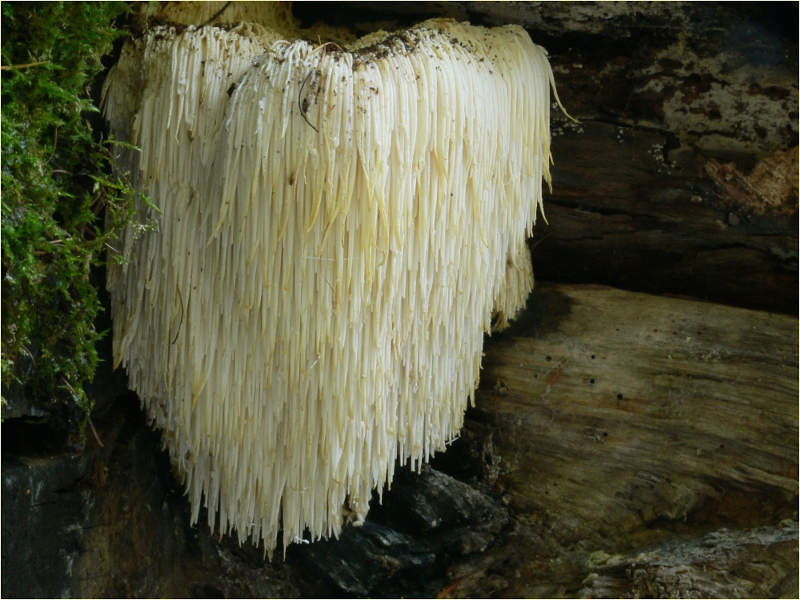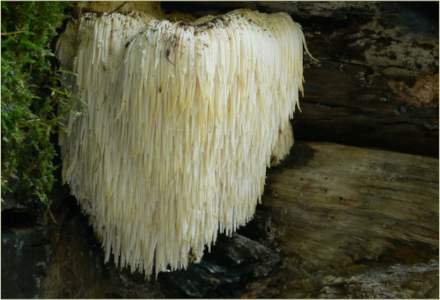
Icicle Mushroom Facts
- Perhaps most notably, the distinctive term Icicle Mushroom serves as the common name for any of the fungi in the genus Hericium. Regardless of its unusual appearance, though, all known members of this genus remain edible, though tastes differ.
- The common name understandably derives from the obvious resemblance of its structure to hanging icicles, or, in the minds of some, cave-based stalactites. For the moment, researchers classify a total of four species within this fascinating genus.
- The different members of this interesting genus also bear other, rather colorful, common names. These distinctive monikers include the lion’s mane, the bear’s head, and the monkey’s head, to go along with their respective scientific names.
- The first known scientific description of these visually distinctive mushrooms further came at the hands of the South African mycologist, Christian Hendrick Persoon. Quite surprisingly to some, he actually made this identification in 1794.
- The Icicle Mushroom does have some commercial uses, though. In some portions of the world, this remarkable fungus can also be found in extensive cultivation as a food source. This usage of it most notably takes place in the country of China.
Related Articles
Phallus Indusiatus Amethyst Deceiver Mycena Chlorophus
Icicle Mushroom Physical Description
Given that multiple forms of the Icicle Mushroom exist, one fact understandably stands out. That’s because certain physical differences quite naturally exist between them. Some of these characteristics nevertheless remain true to them all.
Firstly, the stalk of the fascinating mushroom variety itself remains relatively short. Secondly, it most commonly attaches itself to a tree via its spines. Mature specimens can also be easily distinguished from other varieties by the numerous drooping spines.
Depending on the exact variety of Icicle Mushroom, a third shared trait remains. That’s because these spines may grow either in rows or in large clusters. Unlike many types of mushrooms, this form develops no cap. Its coloring typically remains white or whitish-gray.
- Kingdom: Fungi
- Phylum: Basidiomycota
- Class: Agaricomycetes
- Order: Russulales
- Family: Hericiaceae
- Genus: Hericium
Icicle Mushroom Distribution, Habitat, and Ecology
The various forms of the Icicle Mushroom thrive in most temperate and tropical portions of the world. The greatest number of species evolved in three specific regions of the world, however. This makes it among the most widely spread of all fungi.
More specifically, these zones of habitation consist of the widespread continents of Asia, South America, and North America. However, wherever the wonder appears, its habitat type should come as no surprise to anyone familiar with mushrooms.
That’s because, as remains the case for related species, this type of fungus also prefers to grow in dark, comparatively moist locations. Most commonly, though not exclusively, this variety of mushroom appears on the trunks of dead or dying trees.
When, as remains typical, the Icicle Mushroom appears on the trunks of dead trees, a somewhat unexpected pattern manifests itself. That holds true due to a distinctly uncommon fact. That’s due to the fact that it usually grows close to the top.
For the moment, the precise reason for this preference of placement remains a mystery to researchers. Ongoing research may one day change that, though. This fungus also plays a key role in folk medicine throughout Asia, most notably in Japan and China.
While all known varieties remain edible, those native to China and North America generally rank as the most palatable. The greatest consumption of this particular type of mushroom occurs in China. It remains rarely consumed outside of this region.
Species Sharing Its Range
Golden Pheasant Chinese Lantern Honeysuckle
Check out our other articles on 5 Remarkable United States Reptiles, Armored Sea Robin, Onyx River, Lord Howe Island Stick Insect, Pesquet’s Parrot, Saltwater Crocodile

